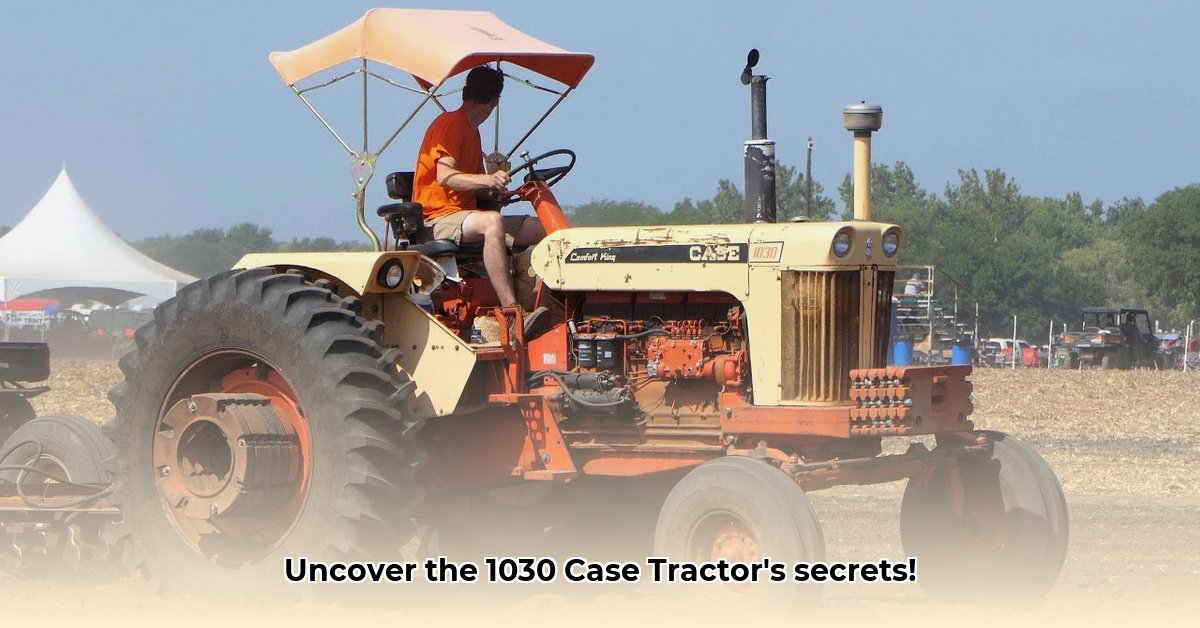
The J.I. Case 1030 tractor, a stalwart of the late 1960s, represents a significant milestone in agricultural technology. Produced between 1966 and 1969, this machine wasn't merely a tool; it embodied a leap forward in farm mechanization. This detailed overview explores its key features, performance capabilities, and enduring legacy. For more information on Case tractors, check out this useful resource.
Power and Performance: The 1030's Engine and Transmission
The Case 1030 boasted a powerful six-cylinder, 7.4-liter diesel engine, generating approximately 101 to 103 PTO horsepower (75.9 kW). While seemingly modest by today's standards, this output was substantial for its time. Coupled with an eight-speed forward and two-speed reverse transmission, the 1030 offered remarkable versatility for a wide range of agricultural tasks, from plowing extensive fields to operating heavy implements. This robust powertrain allowed farmers to tackle demanding workloads efficiently. How did this compare to other tractors available during the same period? Contemporary models often lacked the same power-to-weight ratio, highlighting the 1030's technological advantage.
Design and Variations: Adaptability for Diverse Farming Needs
Case offered the 1030 in several variations to cater to different agricultural practices and geographic conditions. The 1031 General-Purpose model served as the baseline, while the 1032 Western Special was tailored to the unique demands of Western US farms. These variations incorporated subtle yet significant adjustments to enhance performance within specific environments. The 1030's popularity among row-crop farmers is a testament to its precision and adaptability. What specific modifications differentiated the 1031 and 1032 models? Further research could illuminate these critical design variations.
Operator Experience: An Open-Air Approach to Farming
Stepping into the 1030's open-air operator station provided an immersive farming experience. Unlike modern tractors with enclosed cabs, the exposed design offered unparalleled visibility. This direct connection with the environment allowed operators to precisely maneuver the tractor and maintain constant awareness of their surroundings. While lacking the climate control and safety features of contemporary tractors, this open design maximized situational awareness during operation. Did this open design present any significant operational challenges in adverse weather conditions? Further study is needed to explore this aspect of the operator experience.
Technical Specifications: A Detailed Overview
The following table summarizes the key specifications of the J.I. Case 1030 tractor:
| Specification | Value | Notes |
|---|---|---|
| Engine | 7.4L, 6-cylinder diesel | Reliable and powerful for its era |
| PTO Horsepower | Approximately 101-103 hp (75.9 kW) | Variations reported in different sources |
| Transmission | 8 forward gears, 2 reverse gears | Efficient gear selection for various tasks |
| Drive Type | Two-wheel drive | Limited traction in muddy or hilly conditions |
| Total Units Produced | Approximately 13,763 units | Indicates significant market acceptance |
Unanswered Questions: Areas Requiring Further Research
Despite its documented history, several aspects of the 1030's performance remain underspecified. Comprehensive data on fuel consumption and long-term maintenance costs are currently limited, hindering a complete assessment of its overall economic and environmental impact. Addressing these knowledge gaps is crucial to providing a truly comprehensive understanding of the tractor's lifecycle. Where can we find additional information concerning the 1030's fuel economy and maintenance expenses? Dedicated research is necessary to fully document these critical aspects.
The Enduring Legacy of the 1030: A Classic Machine
The J.I. Case 1030 may lack the sophisticated features of modern agricultural machinery, but its historical significance remains undeniable. It embodies a pivotal moment in farm mechanization, showcasing both the technological accomplishments and limitations of its era. For collectors, historians, and enthusiasts of vintage machinery, the 1030 represents a compelling piece of agricultural heritage. Many examples remain functional today, a testament to its robust construction and enduring appeal. The 1030's legacy is one of enduring strength and reliable service to the farming community.